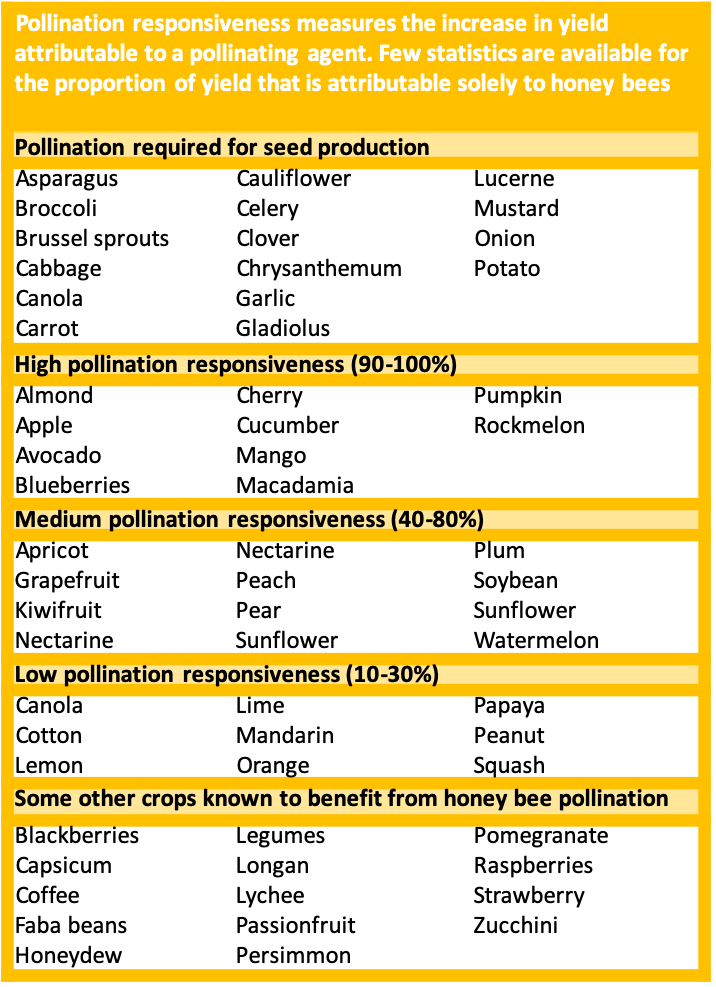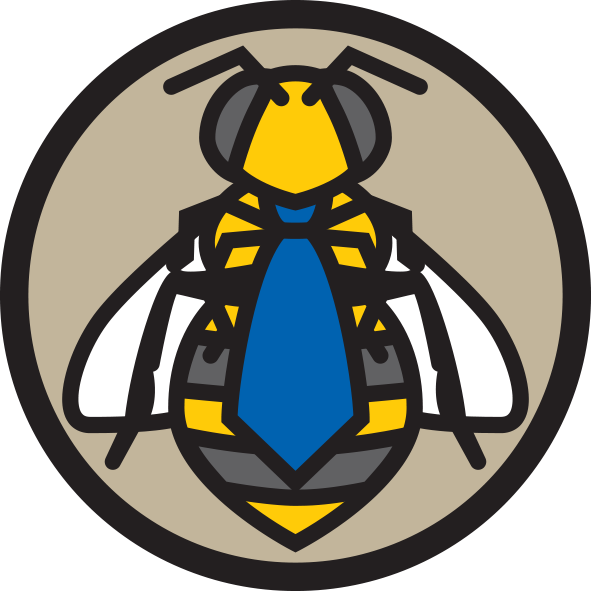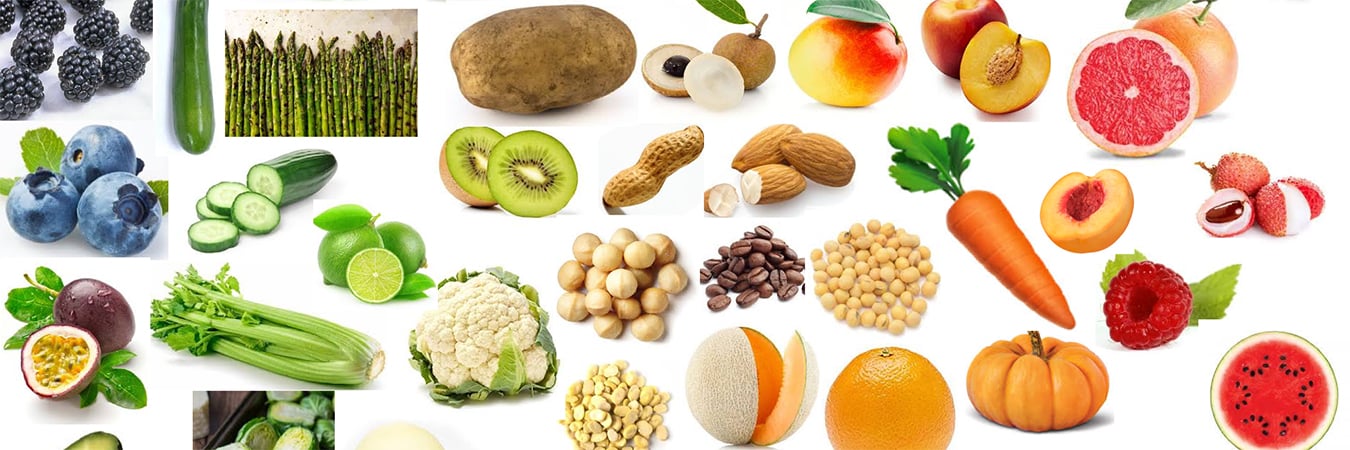This week is devoted to celebrating pollinators. Pollinators include: bees, flies, wasps, moths, butterflies, bats and other small mammals, and birds.
According to an AgriFutures Australia report around 65% of Australian agricultural production depends on insect pollination, and around 35 industries are dependent upon honey bee pollination. In fact, one third of the food you eat relies in some way on honey bees.
Pollination can improve the yield, size, developmental time, shelf life and quality of fruits, vegetables and nuts. Industries that are 100% reliant on pollination include almonds, while numerous vegetable industries rely on pollination for seed production. Livestock industries also rely on honey bees to pollinate clover and lucerne for feed.
Many of our agricultural industries are expanding, increasing the number of bee colonies required for pollination. Our food security depends on keeping our honey bee population healthy. This means that beekeepers need access to floral resources to build up their population for pollination contracts, we need to remain ever vigilant against the entry of bee pests and diseases to Australia and we need to invest in research and training to improve bee health and pollination outcomes.

Adapted from Keogh, Robinson and Mullins (2010) and AgriFutures Australia’s Pollination Aware Case Studies
What makes honey bees such great pollinators (generally)?
- Large colonies mean a large workforce
- Dance language that enables workers to tell other workers where to find flowers
- Hairy bodies for pollen to stick to
- Individual bees usually remain faithful to a specific plant species
- Can be transported easily
- Forage at a wider range of temperatures than smaller bees
- Can be stimulated to increase foraging
Of course, honey bees are not the best pollinator for all crops or native plants, but they are the most versatile.
What barriers prevent beekeepers providing pollination services?
- Crops may provide poorly-balanced nutrition, resulting in a loss of condition
- Some crops require pollination in late winter or early spring, when honey bee colonies are generally at their weakest. Supplementary feeding is often required to stimulate colony growth. Care is required to ensure that supplements do not contaminate the honey crop
- Competition for floral resources to provide nutrition for the rest of the year when colonies are not required for pollination
- The peak pollination period in spring usually coincides with the major annual honey flows, requiring beekeepers to choose between honey production and pollination contracts
- Potential exposure to pests and diseases due to the high concentration of colonies in the crop
- Potential exposure to pesticides and other agricultural chemicals
- The vast distances the bees must be transported
Video
Providing a pollination service – a ‘how to’ video from the Honey Bee & Pollination Program, AgriFutures Australia
Crop guides
New pollination guides have been released for melons, blueberries, macadamia and avocado, in addition to the Pollination Aware Case Studies for numerous crops produced by AgriFutures Australia Honey Bee and Pollination Program.
Additional resources:
- Podcast – ABC podcast on the size and importance of the beekeeping industry
- Events – Find out what events are being held to celebrate Australian Pollinator Week.
Acknowledgements:
- RC Keogh, APW Robinson, IJ Mullins (2010) Pollination Aware: The Real Value of Pollination in Australia. Rural Industries Research and Development Corporation publication 10/081, Canberra, Australia
- R Goodman (2014) Australian Beekeeping Guide. Rural Industries Research and Development Corporation publication 14/098, Canberra, Australia
- D Somerville, E Frost (2018) AgGuide: Pollination using honey bees. NSW Department of Primary Industries, Progress Printing, Condobolin, Australia
- This article was written by Nadine Chapman and reviewed by Steve Fuller, Liz Frost and Lauren Sharkey, Agrifutures Australia.


